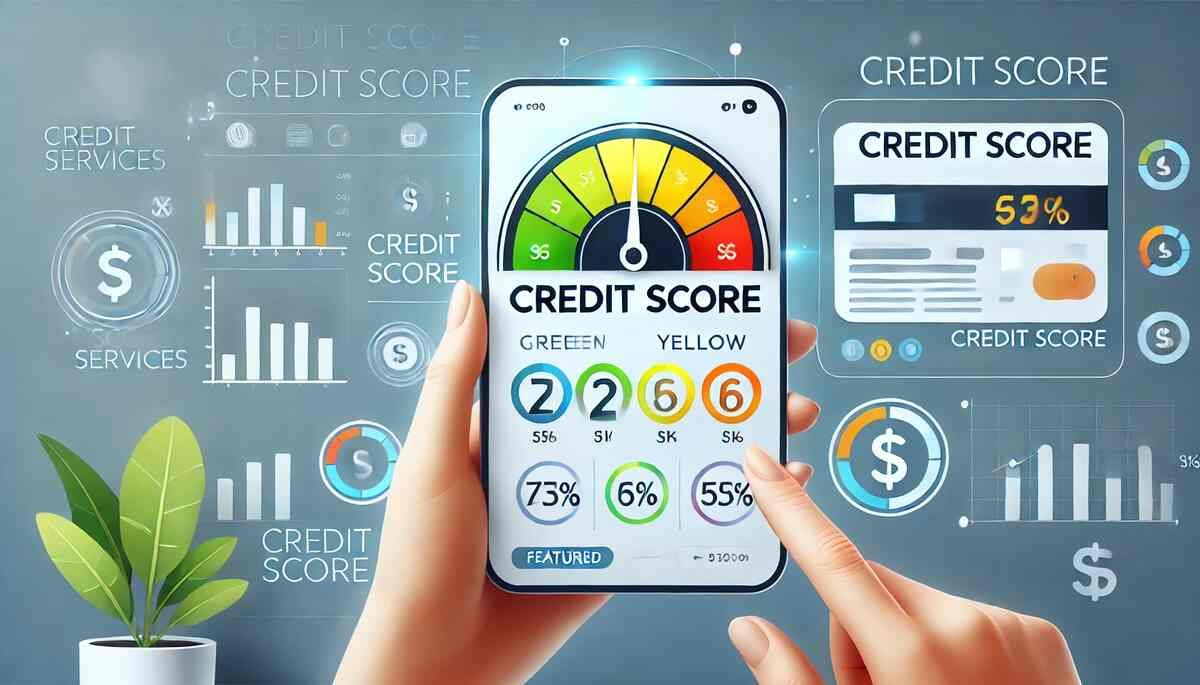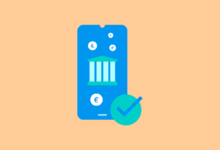Unlock Your Potential: Gomyfinance.com Credit Score Secrets

Think of your credit score as your financial report card. It tells lenders and other financial institutions how reliable you are when it comes to borrowing and repaying money. A good score can open doors to better interest rates on loans, favorable terms on credit cards, and even make renting an apartment easier. Sounds important, right? With gomyfinance.com credit score, you can gain the insights you need to take control of this crucial aspect of your financial life. So, are you ready to unlock the secrets to a healthy credit score? Let’s get started!
Demystifying Your Credit Score with gomyfinance.com: What’s the Big Deal?
That mysterious number – your credit score – it’s more than just a random figure. It’s a snapshot of your creditworthiness, and it plays a significant role in various aspects of your financial life.
What Exactly is a Credit Score and Why Does It Matter?
Simply put, a credit score is a three-digit number that summarizes your credit history. It’s calculated based on information reported to credit bureaus by lenders and other creditors. Why does it matter? Well, it’s a key factor that lenders use to assess the risk of lending money to you. A higher score generally means you’re seen as a lower-risk borrower, which can translate to better loan terms and lower interest rates. Think about it – who wouldn’t want to save money on interest?
Understanding the Different Credit Scoring Models (FICO & VantageScore): Two Peas in a Pod?
You might hear about different credit scoring models, with FICO and VantageScore being the most common. While they both aim to predict your creditworthiness, they use slightly different algorithms and weigh certain factors differently. However, the general principles for building a good score remain consistent across both models. It’s good to be aware of both, and gomyfinance.com often provides information that takes both into account.
The Range of Credit Scores and Their Implications: Where Do You Stand?
Credit scores typically range from 300 to 850. Here’s a general idea of what those ranges mean:
| Score Range | Rating | Implications |
| 800+ | Exceptional | Likely to receive the best interest rates and loan terms. |
| 740-799 | Very Good | Excellent creditworthiness, very likely to be approved for credit. |
| 670-739 | Good | Considered creditworthy, generally receive favorable terms. |
| 580-669 | Fair | May have difficulty getting approved for credit or may receive higher interest rates. |
| Below 580 | Poor | Significant credit risks, likely to face challenges in obtaining credit. |
Knowing where your score falls can give you a good starting point for understanding your credit health.

Key Factors Influencing Your Credit Score: Insights from gomyfinance.com
Your credit score isn’t pulled out of thin air. It’s based on several factors that lenders consider when evaluating your credit risk. Understanding these factors is key to improving your score. gomyfinance.com often breaks these down clearly.
Payment History: The Most Critical Element
This is the single most important factor. Late payments, missed payments, and defaults can significantly hurt your credit score. Paying your bills on time, every single time, is crucial.
Credit Utilization: Keeping Balances Low
This refers to the amount of credit you’re using compared to your total available credit. For example, if you have a credit card with a $10,000 limit and you’re carrying a balance of $3,000, your credit utilization is 30%. Experts generally recommend keeping your credit utilization below 30%, and ideally even lower.
Length of Credit History: Time is on Your Side
Lenders like to see a history of responsible credit use over time. The longer your credit accounts have been open and in good standing, the better it can be for your score.
New Credit: Managing Applications Wisely
Opening many new credit accounts in a short period can lower your score. Each application can trigger a “hard inquiry” on your credit report, which can slightly ding your score. Be mindful of how often you’re applying for new credit.
Credit Mix: A Variety of Accounts
Having a mix of different types of credit accounts, such as credit cards, installment loans (like car loans or mortgages), can be a positive factor. However, it’s more important to manage your existing credit well than to open new accounts just to improve your credit mix.
How to Check Your Credit Score Using gomyfinance.com: Know Your Number
You have the right to know your credit score! There are several ways to check it, and gomyfinance.com can often point you in the right direction.
Finding Reputable Sources for Free Credit Score Checks
Many credit card issuers and banks offer free credit score checks to their customers. Additionally, there are websites that provide free credit scores, though be sure to choose reputable ones. The Consumer Financial Protection Bureau (CFPB) is a great resource for understanding your credit rights and finding reliable information.
Understanding What Information gomyfinance.com Provides
Platforms like gomyfinance.com often integrate with credit monitoring services, allowing you to easily access your credit score and sometimes even your credit report. They might also provide insights into the factors affecting your score and offer personalized tips for improvement.
Interpreting Your Credit Report Effectively: The Details Matter
Your credit report contains a detailed history of your credit activity. It’s crucial to review it regularly for any errors or inaccuracies. You can get a free copy of your credit report from each of the three major credit bureaus (Equifax, Experian, and TransUnion) once a year at AnnualCreditReport.com.
Building and Improving Your Credit Score with gomyfinance.com Strategies: Taking Action
So, your score isn’t where you want it to be? Don’t worry! Building and improving your credit score takes time and consistent effort, but it’s definitely achievable. gomyfinance.com often provides actionable strategies.
Paying Bills On Time, Every Time: The Golden Rule
Seriously, set reminders, automate payments – do whatever it takes to pay all your bills (credit cards, loans, utilities) on time. This has the biggest impact on your score.
Reducing Your Credit Card Balances Strategically: Tackle That Debt
Work on paying down your credit card balances, especially those with high interest rates. As mentioned earlier, keeping your credit utilization low is key.
Avoiding Opening Too Many New Accounts Simultaneously: Patience is a Virtue
Resist the urge to apply for multiple credit cards or loans at the same time. Space out your applications.
The Importance of Reviewing Your Credit Report for Errors: Spotting Mistakes
As mentioned before, errors on your credit report can negatively impact your score. If you find any inaccuracies, dispute them with the credit bureau.
Common Myths About Credit Scores Debunked by gomyfinance.com Experts: Setting the Record Straight
There are a lot of misconceptions out there about credit scores. Let’s bust some of the common myths, often clarified by experts on platforms like gomyfinance.com.
Closing Accounts Improves Your Score (False!)
Actually, closing older, unused credit card accounts can sometimes hurt your score, especially if they have a long credit history and low balances. They contribute to your overall credit utilization and credit history length.
Checking Your Own Credit Hurts Your Score (False!)
Checking your own credit report or score is considered a “soft inquiry” and does not negatively affect your score. Only “hard inquiries,” which occur when you apply for new credit, can have a small, temporary impact.
Carrying a Balance Helps Your Score (False!)
You don’t need to carry a balance on your credit card to build a good credit score. In fact, carrying a high balance can hurt your score due to high credit utilization. The best practice is to pay your statement balance in full each month.
Understanding the Impact of Your Credit Score on Your Life: Beyond Loans
Your credit score’s influence extends beyond just loans and credit cards. It can affect various aspects of your life.
Loan Approvals and Interest Rates: The Direct Link
As we’ve discussed, a good credit score significantly increases your chances of getting approved for loans (mortgages, auto loans, personal loans) and securing lower interest rates, saving you money in the long run.
Renting an Apartment or Buying a Home: Your Housing Prospects
Landlords often check credit scores as part of their tenant screening process. A good score can increase your chances of getting approved for an apartment. Similarly, it’s crucial for securing a mortgage with favorable terms when buying a home.
Insurance Premiums and Utility Deposits: Unexpected Impacts
You might be surprised to learn that your credit score can even affect your insurance premiums and the amount of security deposits you need to pay for utilities. Insurers and utility companies often see a good credit score as an indicator of responsibility.
Even Employment Opportunities: Some Employers Check
In some industries, employers might check your credit report as part of their background checks, especially for positions that involve handling finances.
Leveraging gomyfinance.com Tools to Monitor Your Credit Health: Stay Informed
Staying on top of your credit health is crucial, and gomyfinance.com often provides tools to help you do just that.
Credit Score Tracking and Alerts: Keep an Eye Out
Many platforms offer credit score tracking features that allow you to see how your score changes over time. They might also send you alerts if there are significant changes to your credit report.
Understanding Credit Report Changes: Know What’s Happening
These tools can help you understand what factors are influencing your credit score and identify any potential issues early on.
Setting Goals for Credit Improvement: Aim High
Just like with saving money, setting goals for your credit score can be motivating. If you have a fair credit score, you might set a goal to reach the “good” range within a certain timeframe. gomyfinance.com can help you track your progress towards these goals.
Addressing Negative Items on Your Credit Report with gomyfinance.com Guidance: Fixing Issues
Dealing with negative items on your credit report can feel daunting, but understanding your options is the first step. gomyfinance.com often provides guidance on this.
Understanding Credit Report Errors and How to Dispute Them: Fight for Accuracy
If you find errors on your credit report, you have the right to dispute them with the credit bureau and the furnisher of the information. The credit bureau is obligated to investigate and correct any inaccuracies.
Dealing with Collections and Charge-Offs: Understanding the Impact
Collections and charge-offs are negative marks on your credit report that can significantly lower your score. Understanding how long they stay on your report and what steps you can take (like negotiating with collection agencies) is important.
The Impact of Bankruptcy on Your Credit Score: A Significant Event
Bankruptcy is a serious financial event that can have a significant and long-lasting negative impact on your credit score. Understanding the different types of bankruptcy and their implications is crucial if you’re considering this option.
gomyfinance.com: Your Partner in Achieving a Healthy Credit Score: Your Ally
Ultimately, gomyfinance.com credit score aims to be more than just a keyword; it represents a resource that empowers you to understand, manage, and improve your credit health. It’s about having a partner that provides the information and tools you need to achieve financial well-being.
Accessing Educational Resources and Expert Advice: Learn from the Best
Look for articles, guides, and expert insights often available on platforms like gomyfinance.com. These resources can provide valuable knowledge and strategies for building and maintaining a good credit score.
Utilizing Calculators and Simulators for Credit Planning: See the Possibilities
Some platforms offer calculators that can show you how different actions (like paying down debt or missing a payment) might impact your credit score. These can be helpful for visualizing the consequences of your financial decisions.
Staying Informed About Credit Score Best Practices: Continuous Learning
The world of credit and finance is constantly evolving. By staying informed about best practices and new developments, you can ensure you’re always making the best choices for your credit health.
Take Control of Your Financial Future with gomyfinance.com Credit Score
In conclusion, your credit score is a powerful tool that can significantly impact your financial opportunities. gomyfinance.com credit score serves as your gateway to understanding this vital aspect of your financial life. By providing the knowledge and resources you need to monitor, build, and maintain a healthy credit score, gomyfinance.com empowers you to unlock better financial opportunities and secure a brighter financial future.
Frequently Asked Questions About Your Credit Score with gomyfinance.com
- What exactly is a “good” credit score according to gomyfinance.com? Generally, a credit score of 670 or higher is considered “good.” Scores between 740 and 799 are “very good,” and scores of 800 and above are considered “exceptional.” However, lenders may have their own specific criteria.
- How often should I check my credit score using gomyfinance.com or other resources? It’s a good practice to check your credit report at least once a year for errors. Checking your credit score more frequently, perhaps monthly or quarterly, can help you stay on top of your credit health and identify any potential issues early on. Checking your own score is a “soft inquiry” and won’t hurt it.
- Will paying off a collection account immediately improve my credit score, according to gomyfinance.com advice? While paying off a collection account is a positive step, it won’t necessarily result in an immediate jump in your credit score. The negative mark of the collection will likely remain on your report for a period of time. However, paying it off can prevent further negative impact and might improve your score over time. Some lenders also look more favorably on paid collections.
- I have no credit history. How can gomyfinance.com help me build one? Building credit takes time. gomyfinance.com and similar resources often suggest starting with a secured credit card or becoming an authorized user on someone else’s credit card (with their agreement and responsible use). Making small purchases and paying them off in full and on time is crucial for establishing a positive credit history.
- What are some quick tips from gomyfinance.com experts to boost my credit score in the short term? While there are no magic shortcuts, focusing on the most impactful factors can help. Make sure you’re paying all your bills on time, try to reduce your credit card balances (especially if your utilization is high), and avoid applying for new credit unnecessarily. Addressing any errors on your credit report can also provide a quick boost if inaccuracies are found.














